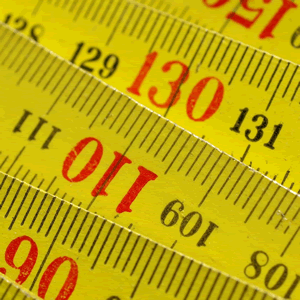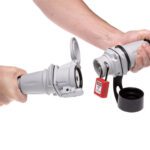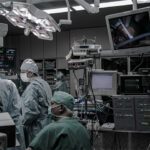Eliminate Thermal Voltage Errors with LLCR Measurements
Low-level contact resistance measurements are an integral part of any test plan designed to assess the reliability of electric contacts. Here, APEX explains how to use LLCR measurements to eliminate thermal voltage errors.
 Low-level contact resistance measurements are an integral part of any test plan designed to assess the reliability of electric contacts. The measurement conditions are constrained such that the measurement itself is unable to modify the contact interface: Any contamination films produced due to environmental stresses to which the tested component was subjected will not be disrupted. Any degradation produced will be obvious immediately. The term “dry circuit” is synonymous with those conditions required for low-level contact resistance measurements (LLCR).
Low-level contact resistance measurements are an integral part of any test plan designed to assess the reliability of electric contacts. The measurement conditions are constrained such that the measurement itself is unable to modify the contact interface: Any contamination films produced due to environmental stresses to which the tested component was subjected will not be disrupted. Any degradation produced will be obvious immediately. The term “dry circuit” is synonymous with those conditions required for low-level contact resistance measurements (LLCR).
Measurement conditions required for LLCR measurements are constrained such that neither the applied voltage nor current will modify the contact interface. The general consensus is that the voltage appearing across the contact must never exceed 20mv and that the current itself be limited to a value of less than 100ma. The 20mv value is nominal for most LLCR specifications, however, while a maximum current of 100ma is allowed, the actual current during the measurement itself may be much less – often in the low ma range. As the current becomes less and less, accuracy becomes much more difficult.
With measurement conditions limiting current to low ma levels, the voltage produced across the component under test could be extremely low, perhaps in the low microvolt range. Certainly, LLCR measurements will require very sensitive instrumentation – voltage resolutions of fractions of a microvolt could be necessary.
The most common source of error in low-level voltage measurements is that of thermoelectric origin. Thermoelectric voltages (thermoelectric EMFs) are generated when different parts of a circuit are at different temperatures and when conductors of dissimilar metals are joined together. Under certain conditions, these thermal EMFs could seriously affect the accuracy of LLCR measurements. Thermal EMF levels could be greater than the IR drop across the contact itself.
Let’s discuss two measuring techniques that may be utilized to overcome unwanted thermal EMF offsets. These procedures are the current-reversal method and the offset-compensated ohms method.
In this discussion it will be assumed that the contact tested will be properly configured for the measurement. The basic four-terminal configuration should be implemented such that any contribution of lead/bulk resistance will be minimized. The following derivations will be such that those parameters that need to be controlled and measured include the current and the voltage developed across the sample. It must be emphasized that the polarity of the measured voltages (+ or -) must be noted and incorporated into the calculation. Hopefully, these derivations will illustrate the rational steps necessary to eliminate errors caused by thermal EMFs. While not explicitly mentioned, these steps will also eliminate any errors caused by meter offsets.
The two methods depend either on a complete temperature stabilization and/or a measurement cycling speed such that the temperature remains essentially constant throughout the measurement. This ensures that the thermal error is constant and is eliminated as the two measurement voltages are subtracted from one another in the manner prescribed.
Current-Reversal Method
This approach consists of making two voltage measurements, the second with the current reversed. A sensitive voltmeter in conjunction with an appropriate bipolar current source may be utilized.
With positive current applied, the measured voltage is:
V(I+) = V(Thermal) + IR
Upon reversing the current, the measured voltage is:
V(I-) = V(Thermal) – IR
The thermal voltage error will be eliminated if we subtract V(I-) from V(I+), in which case we determine:
V(I+) – V(I-) = 2IR
The sign (+ or -) of the measured voltages must be preserved in the calculation.
Finally, and since the resistance must be positive, we can state that
R = ABS ((V(I+) – V(I-))/2I)
where ABS is the absolute value of the terms in parentheses.
Offset-Compensated Ohms Method
This method is somewhat similar to the reversed current technique in that two voltage measurements are necessary. However, in this case the measurement is alternated between a fixed current and zero current.
When the current source is on, the total voltage measured will be the drop across the contact, as well as any thermal EMFs, and may be written as follows:
V(I on) = V(thermal EMF) + IR
The second measurement is made with the current off and will be as follows:
V(I off) = V(thermal EMF)
Subtracting we find:
V(I on) – V(I off) = IR
Again, the sign of the measured voltages must be retained for the calculation. Thus we obtain:
R = ABS((V(I on) – V(I off))/I)
Hopefully, this discussion has provided a better understanding of how offset errors may be eliminated in low-level resistance measurements. Since change in resistance is taken as a prime factor in determining acceptable performance, accurate measurements are mandatory. This discussion did not include specific instrument control/software solutions. A number of integrated instruments are available that have the capability of performing the necessary error reduction operations while operating under very demanding low-level requirements.
Keithley Instruments Inc. and Keysight Technologies (formerly Hewett Packard) are two possible sources for instrumentation suitable for performing LLCR measurements. They offer digital multimeters, which meet dry-circuit conditions and automatically remove thermoelectric offsets by employing the offset compensation method.
 Ed Bock is a senior consultant at APEX Electrical Interconnection Consultants. He has more than 44 years experience in the connector industry (33 with AMP) in the areas of contact physics, electrical contact phenomenon, fretting corrosion, contact lubrication, and wear studies (tribology). His experience includes the areas of electric contact behavior and contact performance at both signal and power levels while subjected to various environmental conditions.
Ed Bock is a senior consultant at APEX Electrical Interconnection Consultants. He has more than 44 years experience in the connector industry (33 with AMP) in the areas of contact physics, electrical contact phenomenon, fretting corrosion, contact lubrication, and wear studies (tribology). His experience includes the areas of electric contact behavior and contact performance at both signal and power levels while subjected to various environmental conditions.







